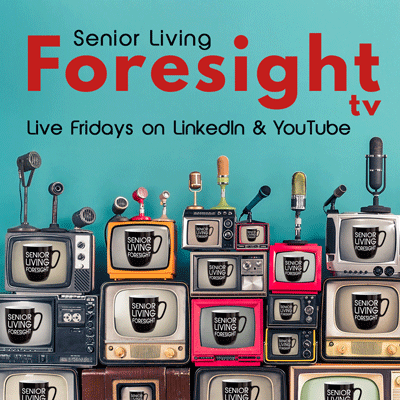By Steve Moran
Recently the Wall Street Journal published an article titled “Coronavirus Pandemic Led to Surge in Alzheimer’s Deaths” that should be read by every single person working in senior living.
According to the article, “Roughly 100,000 people died from Alzheimer’s and dementia from February through May in the U.S.” This is a fatality rate that is 18% higher than average in recent years or about 15,000 people. While it is impossible to specifically attribute that increase to COVID-19, it is not an unreasonable inference.
These are additional deaths that are not included in the COVID-19 data.
Why?
The current thinking is that COVID-19 has brought about radical changes in the established routines most people with dementia need to function at an optimal level. When these routines are broken bad things happen: falls, less sleep, worse nutrition, dehydration, and perhaps an acceleration of cognitive decline.
What We Don’t Know
What the article does not address is how many of those deaths were in senior living, including nursing homes, and how many happened at home.
There is More
It is not just dementia. There have been 8,000 excess deaths from hypertension, 5,000 from diabetes, 3,700 from stroke, and 2,900 from coronary artery disease. That is an additional 19,000 deaths many of which I suspect were not senior living folks.
Senior Living Is the Right Place
These numbers suggest that staying home in the time of a pandemic may, in fact, be more dangerous than living in a senior living community. First, what gets missed is that there are more senior living communities that had no deaths and no infections from COVID-19. In addition, many of those communities that did have infections quickly and effectively contained them, protecting residents and staff.
I mostly see positive hopeful posts about senior living on social media and really anything coming out of the industry. I get it, no one wants to be the purveyor of doom and gloom. But if we are honest, we are in perilous times right now. Business as usual just won’t work. If you were a senior living prospect today, you would be having second thoughts. HOPE IS NOT A STRATEGY, or at least not a good strategy. We need to be thinking about how we are the solution and not the problem.
Data like this gives us something to work with.






Speaking of data and the unknowns …..
I’ve often wondered how the existence of DNRs are affecting the death statistics. Those documents/directives can create a tangled web and misleading statistics. Do readers here think there is a higher concentration of DNRs in long term care facilities? Let’s say “yes.” Then, let’s say there is a death inside the facility of a Covid case with a DNR on file. The patient might have recovered with successful hospitalization, but the DNR was honored. The long term care facility takes the statistical “hit” of a death.
Even in the outside world, we’ve got the “indirect senior deaths because of Covid.” Let’s say a senior still in his own home is a heart patient. He has a DNR. He cancels a routine visit to his cardiologist because of not wanting to be in a waiting room. Tests can’t be done via telemedicine (dealing with doctor on the phone or computer). Unfortunately he has a heart event and his neighbor calls 911. The DNR enters the picture. Another senior death that could have been avoided if it were not for Covid. What statistics would be or should be impacted in this sort of situation?
These are all really important questions. Many in the industry recognize that particularly related to the nursing home deaths, some significant portion of those who die would likely have passed within 3-6 months without the Pandemic. What would perhaps be an interesting number to look would be how many of those who died in senior living communities were on hospice.
Dying prematurely is almost never a good thing, I say almost because I have seen some people who have lived through agonizing last few weeks, where an earlier death could have been seen as a blessing, but I would argue there is a world of difference in the scope of the tragically between someone who loses a few of their last weeks or months and someone who dies with many years left to live.
These are such difficult issues for people to talk about and yet they are really import to individuals and to society.